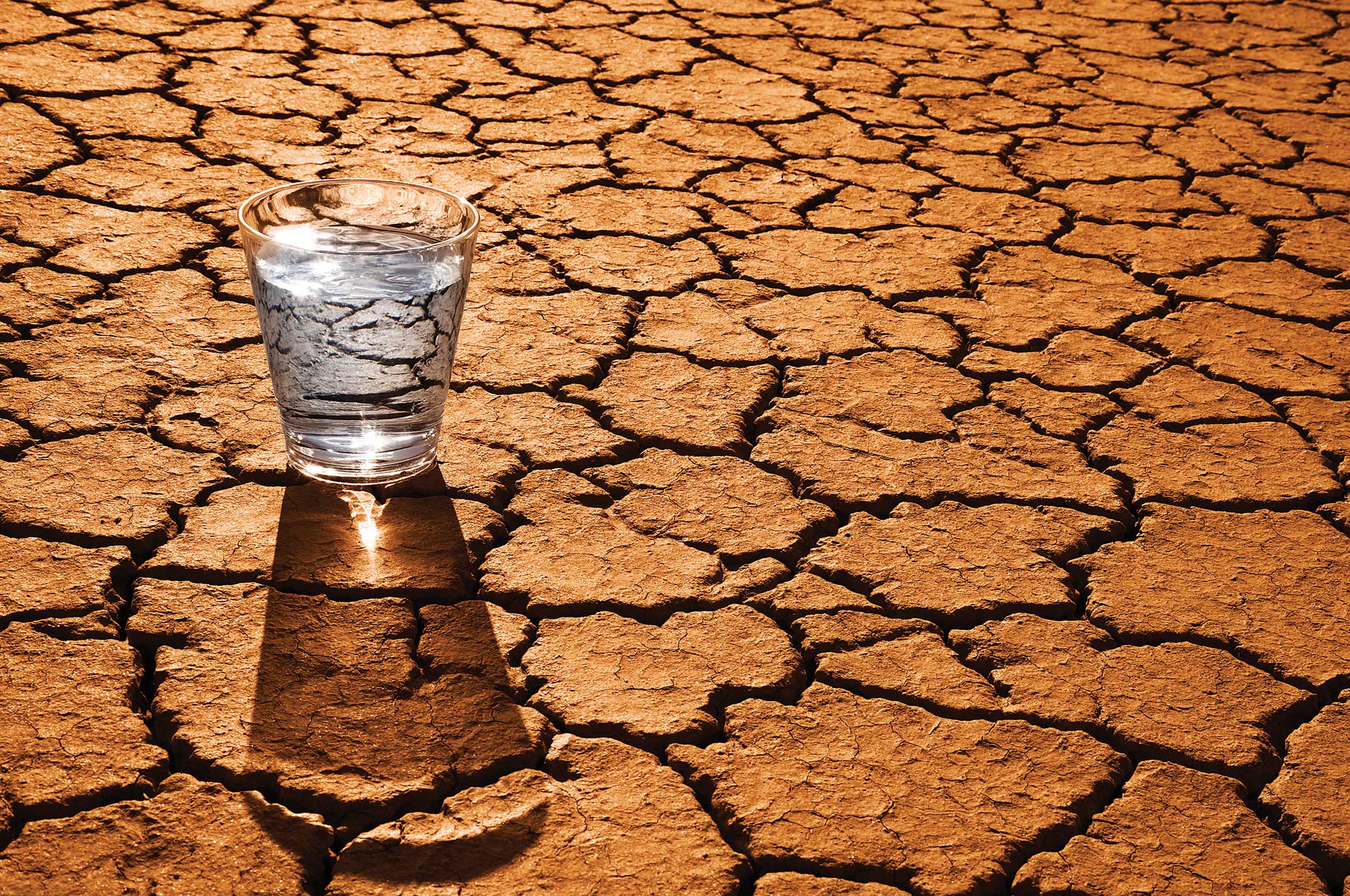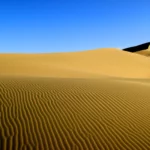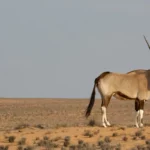Deep in the driest places on Earth, water is a treasure that sustains all life, from the smallest plants to the largest animals. In these harsh deserts, nature and humans have devised ingenious ways to find and utilize water. From observing animal behavior to discovering new ways to extract water from unexpected sources, this article serves as a guide to survival in the desert. Let’s explore the captivating world of desert water and uncover the secrets of survival.
Water in the Desert: Your Lifeline in a Sea of Sand
Imagine yourself trekking through a seemingly endless expanse of sand, the sun beating down relentlessly. It’s in these moments that the true value of water becomes undeniably clear. In the desert, water isn’t just a thirst quencher—it’s your lifeline.
But don’t despair! The desert, while harsh, offers opportunities for those who know how to find them. With some knowledge, you can uncover hidden water sources and make every drop count. Let’s delve into some survival tips that could prove invaluable in a pinch.
Nature’s Clues: Spotting Telltale Signs of Water
Surprisingly, even the driest deserts hold hidden reserves of water. The key is knowing where to look. Think like a detective searching for clues, and the desert will reveal its secrets. Here are some telltale signs:
- Green is Good: Plants require water to thrive. Patches of lush, green vegetation, especially in low-lying areas, are excellent indicators of groundwater. Trees like cottonwoods, willows, and sycamores often have deep roots that tap into water sources.
- Follow the Crowd: Animals, just like humans, need water to survive. Keep an eye out for birds circling overhead, insects buzzing around, or animal tracks converging on a specific spot. These can all be signs of a hidden oasis.
- Rocky Clues: Rocks, while seemingly barren, can harbor pockets of water. Rainwater flowing down slopes collects in crevices and depressions on rock surfaces. Look for damp patches, moss, or even small pools of water trapped in these rocky nooks.
Making the Most of Moisture: Finding Water in Unexpected Places
Sometimes, stumbling upon a flowing stream isn’t an option. But don’t lose hope! There are still ways to collect water, even in the driest conditions:
- Diamonds in the Rough: Dew, though seemingly insignificant, is a valuable source of water in the desert. Before sunrise, use a cloth to soak up dew from plants. Consider creating a larger collection system by draping a plastic sheet over a bush overnight.
- Digging Deep: While the desert surface might be dry, the soil just a few inches below tends to be cooler and retains moisture. Look for shady spots at the base of trees or rocks and dig a small hole. You might be surprised to find damp soil, which you can collect and potentially extract water from.
Natural Oases: Where Water Flows Freely
While not always easy to find, these sources offer a more consistent water supply:
- Underground Reservoirs: Deep beneath the desert’s surface lie hidden reservoirs of water, remnants of ancient rainfall. Sometimes these reservoirs are close enough to the surface to dig down and reach. Look for depressions in the landscape or areas with denser vegetation as potential indicators.
- Desert Ponds: These temporary wonders appear after rainfall, providing a temporary haven for wildlife—and potentially for you. While they might not last long, they offer a welcome respite from the dry spell.
- Wells of Life: If you’re fortunate, you might come across a well—a reliable water source established by those who came before you. Remember to purify any water found in wells before drinking.
Stretching Every Drop: The Art of Water Conservation
Finding water is only half the battle; preserving it is equally crucial.
- Beat the Heat: The desert sun is unforgiving and can quickly evaporate your precious water supply. Limit your activity during the hottest part of the day and seek shade whenever possible.
- Purification is Key: Never assume that water found in the desert is safe to drink without purification. Boil it, use a filter, or add iodine tablets to eliminate harmful bacteria.
- Multi-Purpose H2O: Be resourceful with your water usage. Prioritize drinking, then consider using leftover water for cooking or cleaning.
Beyond the Basics: Water Wisdom for the Desert Explorer
- Local Knowledge is Power: Indigenous communities have thrived in deserts for centuries, developing ingenious methods for finding and managing water. If you encounter locals, approach them with respect and learn from their wisdom.
- Extreme Challenges Require Extreme Solutions: Deserts vary greatly in their harshness. Some are truly unforgiving, pushing survival skills to the limit. Researching the specific challenges of your destination is crucial for preparation.
- Innovation for the Future: From solar-powered distillation devices that extract moisture from the air to advanced filtration systems, technology is constantly evolving to combat water scarcity in arid regions.
- Sustainability for Survival: As we venture into these delicate ecosystems, minimizing our impact is essential. Practice Leave No Trace principles, conserve water diligently, and respect the fragile balance of life in these extreme environments.
Remember, surviving in the desert is about more than just knowing where to find water—it’s about respecting nature’s power and adapting to its rhythms. With careful planning, a healthy dose of caution, and a touch of resourcefulness, navigating the world’s arid landscapes can be an exhilarating and rewarding experience.
How-To Find Water in the Desert
Lost in the desert? Sun scorching, sand stretching endlessly, and that thirst gnawing at you? Finding water becomes the top priority, but how do you succeed when everything appears bone dry? The desert actually holds secrets to staying hydrated if you know where to look.
Playing Detective: Nature’s Hints
Think like a detective on the hunt for clues. Do you spot a patch of ground that seems darker and feels damp? It could indicate water close to the surface. Keep an eye on birds and bees—they are naturally drawn to water sources. If you see them congregating around a particular area, it’s worth checking out. Dried-up riverbeds, those scars in the sand, sometimes hold water underground. A good pair of binoculars can be invaluable in spotting these signs from a distance.
Catching Those Precious Drops
Rain in the desert may be rare, but when it falls, be prepared! Spread out a tarp to collect every drop, or utilize any containers you have. If you can’t find a natural dip in the ground, dig a shallow one yourself—you might be surprised to encounter damp soil holding some moisture. Remember, even if you find water, purify it by boiling or using iodine or chlorine tablets before drinking.
Thinking Like Water (and Plants)
Believe it or not, some parts of the desert are better at retaining water than others. Those sandy areas at the bottom of large dunes often trap moisture. Watch for any vegetation, especially along those dry riverbeds. Plants need water to survive, so where there are plants, there’s a good chance water is nearby. Did you know that higher elevations in the desert sometimes receive more rainfall? It’s something to keep in mind!
Staying One Step Ahead of Thirst
The desert demands respect. Avoid strenuous activities during the hottest part of the day to conserve both energy and sweat. Always carry more water than you think you’ll need – it’s better to have too much than not enough. Rationing is crucial—take small sips to make your supply last. Eating fruits and vegetables with high water content can help maintain hydration. Electrolyte supplements are also a good idea in these conditions.
The Takeaway? Don’t Give Up!
Finding water in the desert is a true challenge, but it’s not an insurmountable one. By learning to interpret the signs, using a bit of ingenuity, and remembering these survival tips, you significantly increase your chances of finding this precious resource. You might even surprise yourself with your desert survival skills!
Keep Learning!
This is just the tip of the iceberg! There’s a wealth of information available on desert survival. Dive into research, explore survival guides, and even practice some of these skills in a safe environment. You never know when knowledge like this might come in handy.
Water Conservation Techniques for Desert Survival
Finding water in the desert is essential, but ensuring that every drop counts is equally important. Let’s explore some practical ways to stretch that precious H2O even further.
Desert-Savvy Landscaping: Think Like a Cactus!
Imagine a cactus thriving under the scorching sun. Cacti are experts at conserving moisture. We can learn from them! Planting native desert plants, like succulents, cacti, or even specific types of grasses, is a fantastic way to conserve water. These plants have adapted over time to thrive in dry conditions, reducing the need for frequent watering.
Tech to the Rescue: Gadgets for Guzzling Less
Remember those sci-fi movies with futuristic water-saving devices? The future is here! We have access to incredible technology like low-flow showerheads and faucets that provide ample water pressure while reducing waste. Drip irrigation systems deliver water directly to plant roots, minimizing evaporation. Some systems even monitor soil moisture and adjust watering schedules automatically—talk about intelligent gardening!
Recycling: Give Water a Second Life
Water can be a team player! Instead of sending it straight down the drain, why not give it another purpose? Collect water used in the shower, sinks, and even the washing machine (as long as you’re not using harsh chemicals). This “gray water” is excellent for watering plants or light cleaning around the house. High-efficiency washing machines use significantly less water per load, making them an eco-friendly choice.
Little Habits, Big Impact: Water-Wise Living
Water conservation isn’t just about fancy gadgets—it’s about making thoughtful choices daily. Simple changes can make a big difference:
- Shower Power: Shorten those marathon showers—you’ll save water and still feel refreshed!
- Dry Cleaning Dilemma: Consider dry cleaning for delicate items; it often uses less water than traditional laundry methods.
- Leaky Faucet Fix: That annoying drip wastes precious water and costs you money. A quick fix can save gallons over time.
Spreading the Word: Knowledge is Power
Imagine a world where everyone understands the importance of water conservation. By sharing our knowledge, we create a ripple effect, empowering each other to be water-wise heroes.
Remember, these are just a few ways to conserve water in desert environments. Ongoing research is constantly exploring new and innovative techniques, so stay curious and keep learning!
The Impact of Climate Change on Desert Water Sources
Deserts are inherently dry, but climate change is exacerbating the challenges of finding water in these delicate ecosystems.
One of the most significant problems is that rising temperatures accelerate evaporation from rivers and lakes, leaving less water available for all life that depends on it. Climate change also disrupts rainfall patterns. Deserts may experience more extreme and prolonged droughts or sudden, heavy downpours that cause damaging floods instead of soaking into the ground.
The impact extends beyond the surface. Deep underground, groundwater sources that sustain many desert communities are also at risk. As droughts become more common, these underground reserves are being depleted faster than they can naturally replenish, leading to a gradual disappearance that is difficult to see but even harder to live with.
Imagine a desert as a delicate web of life. Plants and animals have adapted to survive with minimal water, but climate change is like poking holes in this web. As water sources become less reliable, this balance is disrupted. Plants struggle to grow, impacting the animals that depend on them for food and shelter.
Desertification—the process of fertile land transforming into a desert—is also accelerated by climate change. As temperatures rise and rainfall patterns become less predictable, the soil dries out and becomes susceptible to erosion. This makes it harder for plants to establish roots and for water to be absorbed into the ground, creating a vicious cycle that leads to even drier conditions.
So, what can be done? Addressing this challenge requires a multifaceted approach. People are working on finding ways to manage water more effectively in these changing conditions. This includes developing drought-resistant crops, implementing more efficient rainwater collection and storage methods, and exploring new ways to access and manage groundwater resources. It’s a complex puzzle where every piece, from technology to community action, is crucial.
Understanding the impact of climate change on desert water sources is paramount for protecting these unique ecosystems and the people who call them home. We still have much to learn about these intricate systems, but by working together and adapting to the challenges ahead, we can strive to protect these precious resources for generations to come.
Explore Further
Ready to delve deeper into the fascinating world of deserts? Check out these related articles:
- Explore the deserts in Africa with their unique flora and fauna, including a fascinating variety of desert bugs.
- Discover the extraordinary non living things in the desert that contribute to its harsh yet captivating environment.
- Learn about the intriguing abiotic animals in the desert that have adapted to these extreme conditions.
- Get insights into the remarkable California desert region facts that showcase the diversity and significance of this vast ecosystem.
- Embrace the beauty of desert flora nyt as you explore the intricate tapestry of plants that thrive in this unforgiving landscape.
- Uncover the fascinating abiotic components of desert and their profound impact on shaping the unique characteristics of desert ecosystems.















